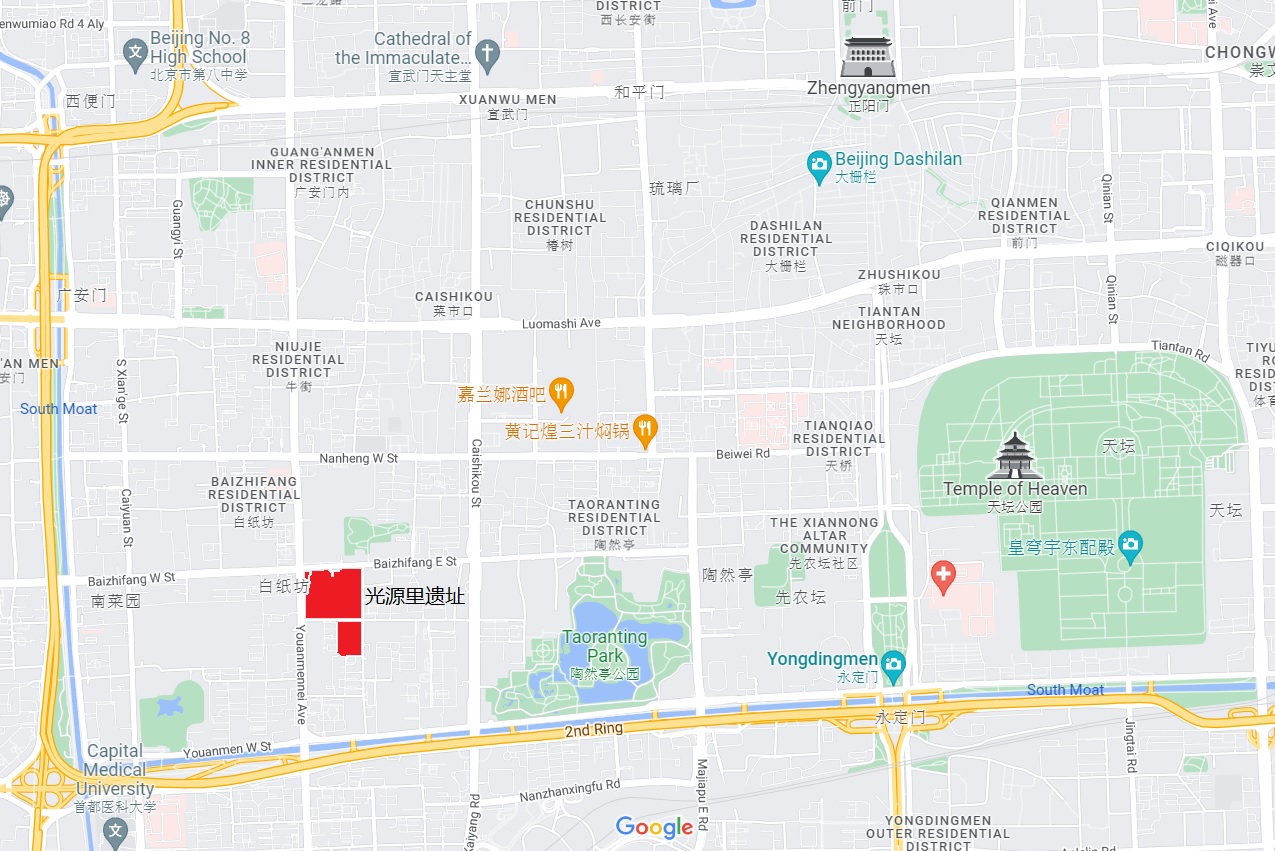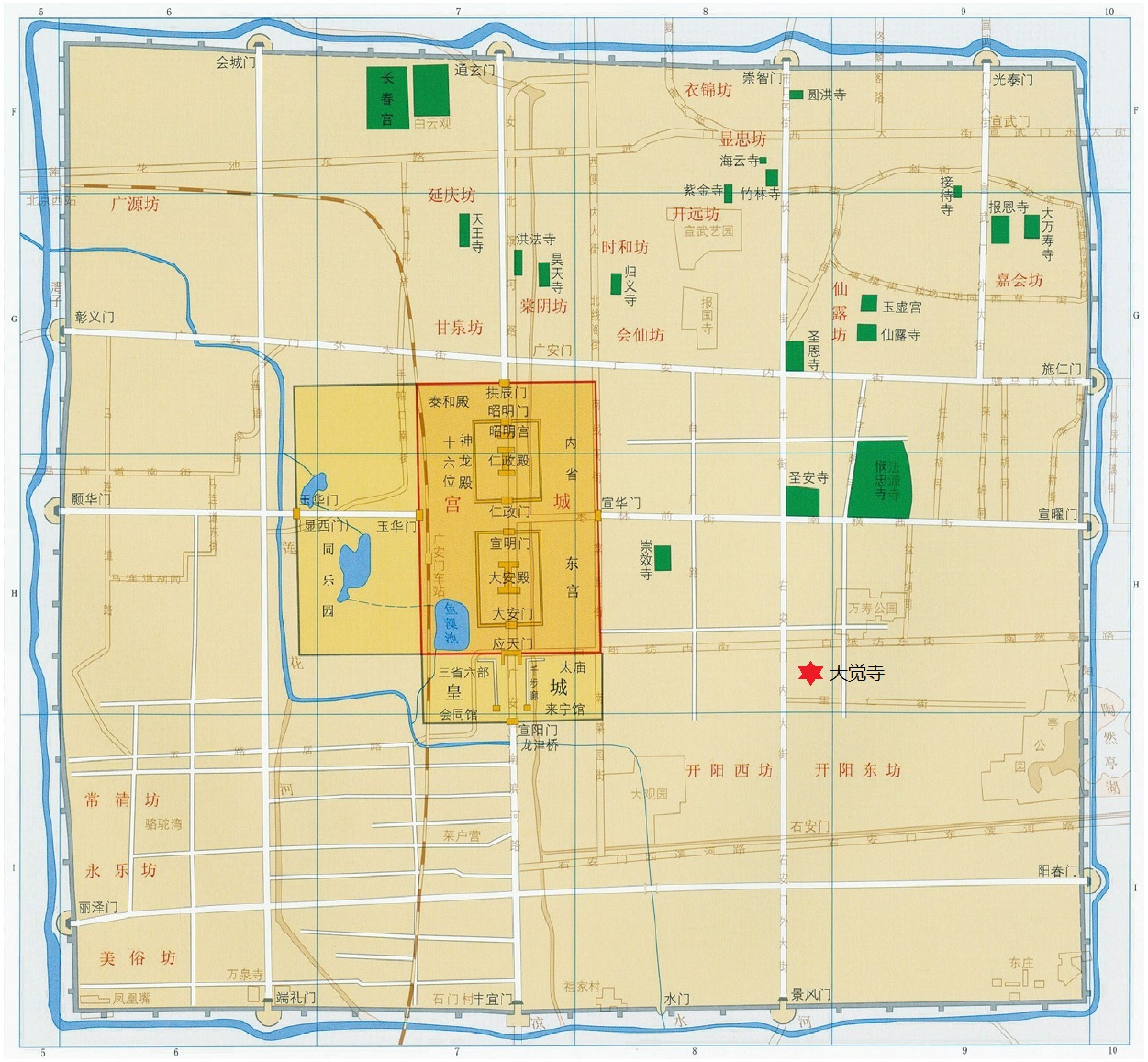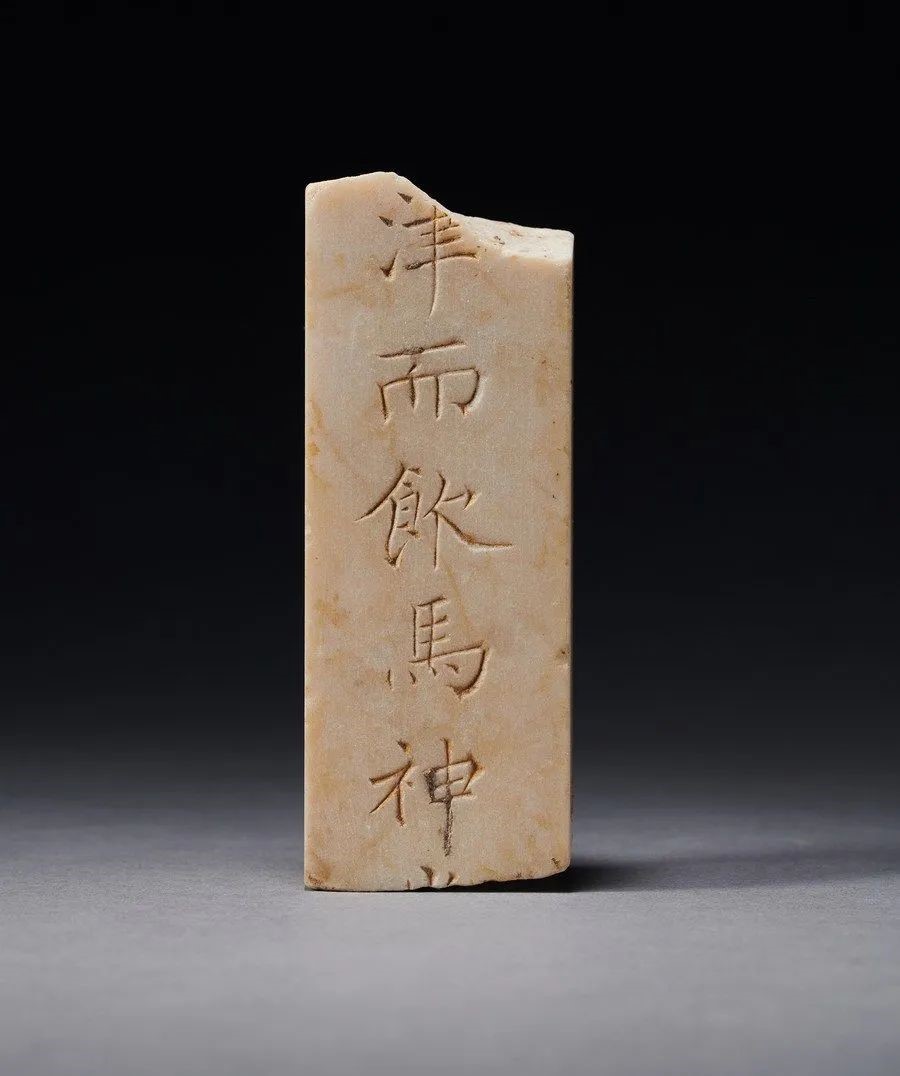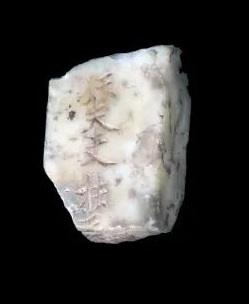BabelStone Blog
Sunday, 22 January 2023
Marble Slips from the Central Capital of the Jin Dynasty
In recent years there have been two important discoveries of fragments of marble slips from so-called 'jade books' 玉册 which I have discussed on the BabelStone blog:
- Khitan Fragment from the Liao Mausoleum at Yiwulü Mountain : Between 2015 and 2018 at least four fragments of marble slips were unearthed from the site of the mausoleum of Emperor Jingzong of Liao (reigned 969–982) on the eastern flank of the Yiwulü Mountains 醫巫閭山 in Liaoning province. Two fragments are engraved with Chinese text, and two fragments are engraved with Khitan small script text.
- Fragments of Tang Inscriptions from Karabalgasun : Between 2009 and 2017 at least five fragments of marble slips engraved with Chinese characters were unearthed from the site of the city of Karabalgasun in central Mongolia, which was the capital of the Uighur Khaganate between 744/745 and 840. The text on these fragments derives from Text for the Investiture of the New Khagan of the Uighurs 册新回鶻可汗文 and Text for the Investiture of the Khagan of the Uighurs with a Title 册回鶻可汗加號文 which were both composed in 821 on behalf of the Tang court by Bai Juyi 白居易 (772–846).
Documents engraved on marble slips are exclusively associated with important documents related to the emperor such as imperial investitures and imperial sacrifices, and several complete or partial examples dating to the Tang and Song dynasties have been found. Although commonly referred to as 'jade books' in both historical and modern sources, the stone slips were actually made from a type of fine-grained white marble known as mín 珉 or 瑉. The History of the Song Dynasty (Sòng Shǐ 宋史 vol. 154) describes the marble slips (珉簡) used to engrave investiture texts for the emperor, empress and crown prince as each being one foot and two inches in length and 1.2 inches wide (簡長一尺二寸,闊一寸二分), and bound together using gold thread.
An article entitled 北京金中都光源里遗址考古新发现 (originally published on the WeChat channel 文博中国 on 5 January 2023) reports the excavations at the Guangyuanli site (光源里遺址) in Beijing between 2019 and 2022 of a Jin dynasty (1115–1234) site tentatively identified as part of the Dajue Temple (大覺寺) that was established in the Central Capital (Zhongdu 中都) during the Dading 大定 era (1161–1189). Based on the scale of the uncovered buildings, and the quality of the finds excavated there, it is believed that the temple was intended for imperial use, and may have been a repository for imperial documents.
Location of the Guangyuanli site in Beijing
Guangyuanli site marked in red
Plan of the Jin dynasty Central Capital (Zhongdu)
Reconstructed plan of Zhongdu by Xú Píngfāng 徐苹芳
Originally included in 《中华人民共和国国家历史地图集》 (2012), but here copied from 辽金燕京城研究史 p. 90
Guangyuanli site marked with a red star
Among the reported finds are five fragments of marble slips from a 'jade book' which were found in the vicinity of the main Jin dynasty building (1号基址). The online report is not clear on exactly where they were found, but it seems that one fragment was found in or close to the main building, and the other four fragments were found within 200 metres of the main building. The report also mentions in passing that one or more fragments of a 'jade book' were unearthed from the site of the southern moat of the Liao dynasty city (辽南京南护城河). We will probably have to wait for the published excavation report to get a better understanding of what was found and where.
Plan of excavations at the Guangyuanli site
Source: 北京金中都光源里遗址考古新发现
The online report provides this photograph of the five marble slips that were found near the main Jin dynasty building.
Marble slips excavated from the Jin dynasty capital
Source: 北京金中都光源里遗址考古新发现 (2023-01-05)
The four fragments on the left are inscribed clearly and neatly with the Chinese text shown below:
- 博施濟衆謂之
- 津而飲馬神(光)
- 取五
- 幾
Marble slip with inscription "津而飲馬神"
Source: 北京金中都遗址发现一处大型建筑基址 (2023-10-07)
The text on all four fragments can be found in the same section of vol. 3 of Dajin Jili 大金集禮, which is a compilation of documents relating to Jin dynasty customs and rituals, compiled by Zhang Wei 張暐 and other Jin dynasty officials. The section of text these fragments come from is entitled 部擬御服如來儀省改奏便服, and is among court memorials from the 5th year of the Huangtong 皇統 era (1145). Evidently this document was originally engraved as a 'jade book' when it was presented to the emperor (Emperor Xizong of Jin), but this sort of document is outside of my area of expertise, so I will not discuss it further here.
《大金集禮》卷三:部擬御服如來儀省改奏便服
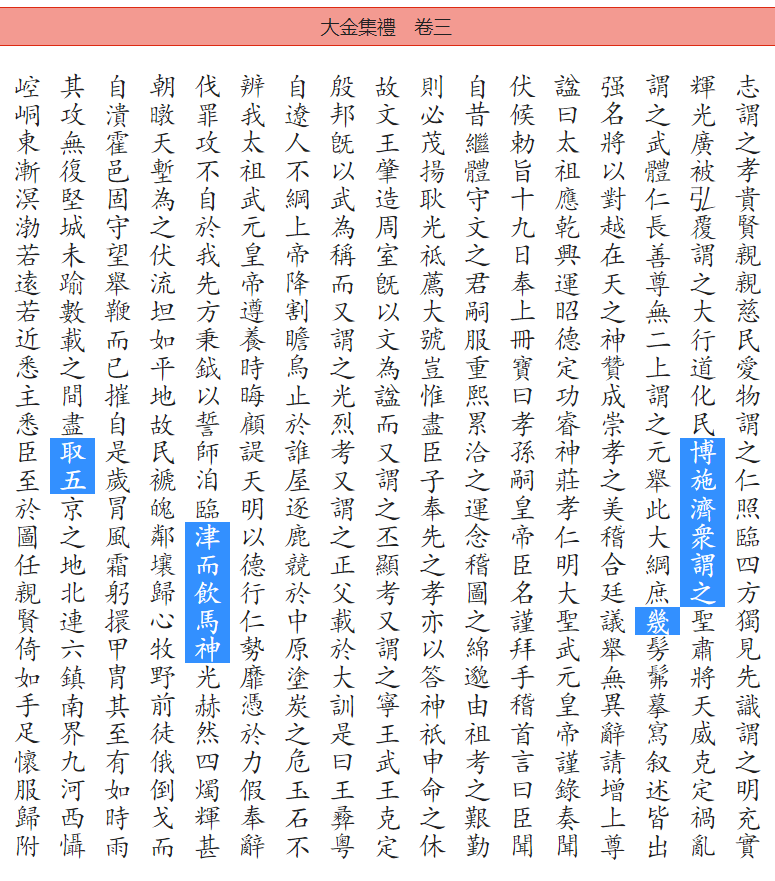
Source: Wikisource :《大金集禮》卷三
The other fragment is somewhat different in appearance, and I suspect that it is the single piece which was found separately from four other pieces. Most notably, the text engraved on it seems to be written in the Jurchen script rather than Chinese characters. Unfortunately, the text is not clear in the available photograph, but it appears to comprise four complete characters and the top of one partial character at the bottom.
Marble slip engraved with Jurchen text
My provisional (and very uncertain) reading of the text is shown below.
| No. | Glyph | Reading and Meaning | Notes |
|---|---|---|---|
| 1 |  |
(g)un | Left side unclear, right side uncertain. |
| 2 |  |
dai 'big' | Uncertain as the dot of the glyph is absent; it may perhaps be  taiji or taiji or  omi. omi. |
| 3 |  |
burə | Occurs with the following character in the word      dʒal-an-burə ei-ə 'without end' (不息). dʒal-an-burə ei-ə 'without end' (不息). |
| 4 |  |
ei | |
| 5 |  |
fu | Only the very top of the character remains, so the identification of this character is very precarious, but it is plausibly  as as   ei fu means 'tomb' (cf. Manchu ᡝᡳᡶᡠ eifu 'tomb, grave'). It could also be ei fu means 'tomb' (cf. Manchu ᡝᡳᡶᡠ eifu 'tomb, grave'). It could also be  (also written (also written  ) xəri 'to return' which occurs following ) xəri 'to return' which occurs following  in the Jurchen inscription found in 2014 in Shenmu 神木 county in Northern Shaanxi (see image below). in the Jurchen inscription found in 2014 in Shenmu 神木 county in Northern Shaanxi (see image below). |
Detail of the Shenmu Jurchen inscription


I very much hope that more marble fragments are recovered from the site, especially any more that are engraved with Jurchen text. I will update this blog post when any more information becomes available.
Last modified: 2023-10-07
Index of BabelStone Blog Posts
